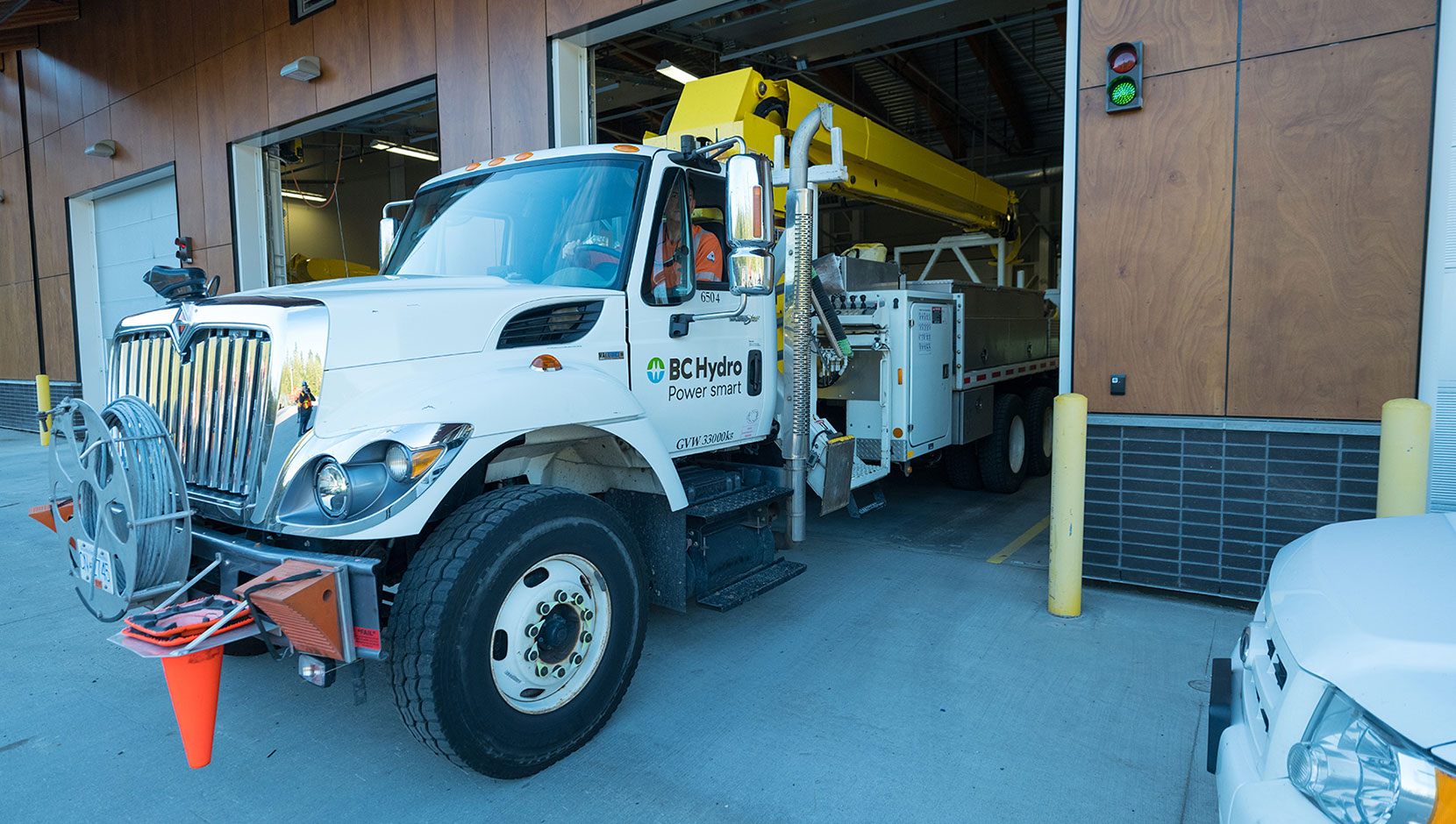FAQS: Employee Resource Groups at BC Hydro


BC Hydro has a long history with Employee Resource Groups (ERGs), with the first being established in 2004. Today, BC Hydro has five ERGs to support women, Indigenous Peoples, multiculturalism, LGBTQ2S+ and persons with disabilities.
The following FAQs are intended to assist organizations in forming their own ERGs by learning from BC Hydro’s experience.
All the inclusion and diversity ERGs give employees a safe space to discuss topics that are relevant and important to them and make recommendations to the organization. The groups also give employees an opportunity to participate in something beyond their day-to-day job, and for some, the opportunity to develop through leadership roles.
BC Hydro’s ERGs are an important part of its workplace culture.
How do you define ERGs at BC Hydro?
ERGs are sponsored by Human Resources through the Inclusion and Diversity program. The ERGs are organized around providing support and giving voice to employees in the organization and identifying systemic barriers that may be impacting them in their role or workplace.
What is the purpose of your ERGs?
The work that the ERGs do to create a more inclusive workplace and safe space for employees to come together and share their experiences is an integral part of BC Hydro’s Inclusion and Diversity strategy.
ERGs benefit employees by:
- Creating an environment for making informal connections and building relationships across business areas and geographies.
- Providing a channel for employees to identify barriers to their success and to contribute to building a culture of inclusion.
- Supporting members in their professional/personal growth and encouraging employees to be proactive in managing their careers.
The ERGs benefit BC Hydro by:
- Demonstrating our support for inclusion and diversity
- Providing insight into systemic barriers faced by employees.
- Engaging employees and creating cross-functional exposure and relationships; including a direct connection to an Executive sponsor.
- Providing development opportunities for participants.
- Building BC Hydro’s reputation as an inclusive employer.
How do ERGs come together/start?
At BC Hydro, most of the ERGs start with a few employees identifying a shared interest. The only exception is its Indigenous employee network, which formed as a result of a recommendation from the Canadian Council for Aboriginal Business, as BC Hydro was being certified for the Progressive Aboriginal Relations designation.
How do you decide on membership for your ERGs? Are they open to employees with a lived experience[1], or open to allies as well?
Each ERG decides who can participate, and what role that participation will take. Currently all ERGs have open membership, except for the Indigenous Employee ERG. All the ERGs share an aspiration: to balance the need to create a safe space for their members to share and learn from one another’s experiences, and the need to reach out to allies and build understanding and inclusion.
[1] Lived experience is a term used to describe first-hand accounts of living as a member of a minority or oppressed group. For example, when women talk about what it’s like to be female in a predominantly male environment, they are describing their lived experiences.
What role does privacy play in ERGs?
As a Crown corporation, BC Hydro takes privacy of the individual very seriously. Employee training on privacy is mandatory and is refreshed regularly. The sensitivity of privacy in relation to ERGs is about the membership lists. There are rules governing the assembly, maintenance, sustainment, use and access to the lists.
ERGs are advised on privacy best practices, such as limiting the data collection to what is required for a purpose, telling members upfront what survey information is being used for, using tools to store and capture information that comply with privacy standards, limiting access to member data and destroying any personal information after it has served its use.
There are some instances where privacy may play an even more significant role. Typically, this occurs when someone joins a group where they disclose information that they may have not disclosed to their colleagues, their employer, their family or their community in fear of what could happen as a result.
Examples could be an employee with a disability who joins an ERG but has not disclosed having a disability at work. These personal details require additional vigilance with respect to privacy to prevent accidental disclosure.
If ERGs decide they want to be open to lived experience employees, how do you handle self-declaration?
BC Hydro ERGs have emerged from an appetite to connect with and build understanding and support within non-dominant groups. Personal stories and impressions are part of connecting within a shared experience. Many of the ERGs feel it is part of their role to make BC Hydro aware of the large and small ways their work experience differs from the dominant group, and to advocate for equity.
Some networks ask employees to self-identify (optional) on their membership form. The reason the networks ask employees to self-identify is to inform the network’s programming. Aggregate information may also be used to communicate the diversity of membership in the network. Access to employees’ responses are limited to the network leadership team.
In general, BC Hydro ERGs have adopted what can best be described as an “embassy” model, wherein members are welcomed, included and connected to support within the ERG, with an understanding that it is not the role of the ERG to intervene in the members’ work, family, or community context.
How are your ERGs governed?
The ERGs are governed independently by a member-elected body of officers and exist to serve the needs of their membership. Each ERG has its own governance structure and culture.
Some of the groups have very structured governance, with defined executive roles, term limits and regular elections. Some of the groups have a loose structure, preferring to share the role of guiding the organization and providing opportunities for a wider group to be involved in governance. Each group has a terms of reference, which documents the purpose, goals, and membership criteria for their ERG.
How do you measure success of your ERGs?
Each ERG has its own metrics and program measures; typically, they focus on growing membership, member satisfaction with programming, and the changes made in response to ERG insights and recommendations to BC Hydro in support of the communities they represent.
More broadly, BC Hydro looks at the impact of ERGs in how employees answer questions related to diversity and inclusion, discrimination, harassment, and psychological safety in its annual employee engagement survey.
How do senior level staff participate in your ERGs?
Oversight of the corporate strategy for inclusion and diversity is the responsibility of the Vice President, People and Chief Human Resources Officer. Within Human Resources, there is a Senior Program Manager for the Inclusion and Diversity Program who is a subject matter expert and responsible for the research, design, management, partnerships and community relationships, and support to the ERGs.
Each ERG is also sponsored by a member of our Executive Team and attends periodic meetings with the Executive Team. Senior leaders across the company are invited to participate regularly in events hosted by the ERGs – from participating in panels to its members on topics of interest, to celebrating National Indigenous Peoples Day or walking in the Pride Parade.
How do ERGs submit recommendations to the organization?
Recommendations to the organization are facilitated by the Inclusion & Diversity Program Manager through a semi-annual meeting with the Executive Team.
Dialogue on recommendations and actions occurs regularly between members of the I&D team and the respective ERGs.
What types of programs or events have your ERGs initiated or participated in?
Many of the ERGs have anchoring events held annually while some events are prompted by community or social importance.
Some examples of ERG events include:
- An Executive Panel for Senior Leaders to be accessible to the membership for a discussion on matters that are important to them.
- Taking the Stage – a women’s personal leadership program from the Humphrey Group on how to speak with courage and confidence and be heard as leaders.
- A “Buddy program” where an employee is paired up with a tenured BC Hydro employee with a similar background.
- Regular newsletters to connect members and allies across the province on topical issues, upcoming events, and share resources.
- Awareness building workshops to facilitate employee dialogue on topics of importance such as Black Lives Matter and Anti-Asian Racism.
- ERGs promote membership to their groups at many events throughout the year that bring BC Hydro employees together.
What do ERG meetings look like, and how often are they held?
Typically, the ERGs meet at the beginning of the year to plan their programming and then meet monthly.
Most ERG meetings address progress against their annual plan, planning details of an event or discussing a topic of shared interest.
